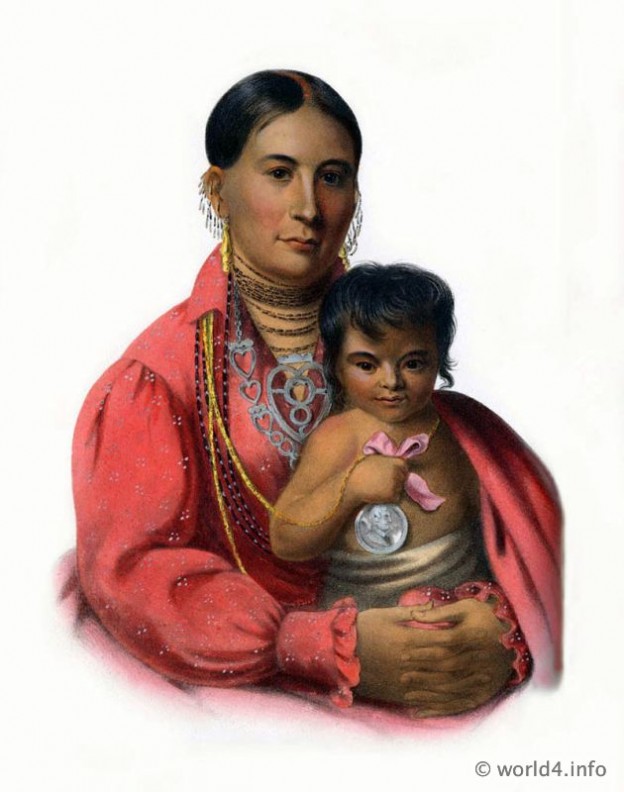Yoholo Micco was principal chief of the Eufaula town. He was the speaker of the Creek nation.
Category: North America
North America costume
SHARITARISH a Pawnee Chief.
Sharitarish was principal chief, or head man of the Grand Pawnees. He was descended from a line of chiefs
Mohongo, an Osage Woman with her child. Native American.
She was one of a group of seven members of her tribe to be exhibited in Europe.
Keokuk chief of the Sac and Fox, 1832
As chief of the Sauk and Fox, he was one of the most important chiefs in his time.
Osceola, a Seminole Leader, son of a Creek chief.
Osceola, a Seminole Indian, was the son of a Creek chief who was killed in a 1808 battle with U.S. troops.
Sioux Squaw and Papoose. Native Americans.
Sioux Squaw and Papoose (baby, child). First Nation. Native Americans.
Last Horse, Oglala Sioux Chief. Native Americans.
Last Horse, Oglala Sioux Chief. Native Americans.
Short Bull, Chief of Brule Lakota, Sioux tribe.
Short Bull, Indian name Tatanka Ptechela was a Brulé (Oglala) Lakota Sioux medicine man who was one of the most prominent leaders in the 1890s Ghost Dance Movement.
Sioux Black Eagle wearing an eagle feather bonnet.
Sioux Black Eagle. He is wearing an eagle feather bonnet.
Auray, Chief of the Ute Nation. Native American people of the Great Basin.
The Ute lived in the vast landscapes of the Great Basin and subsisted almost exclusively on big game hunting.










